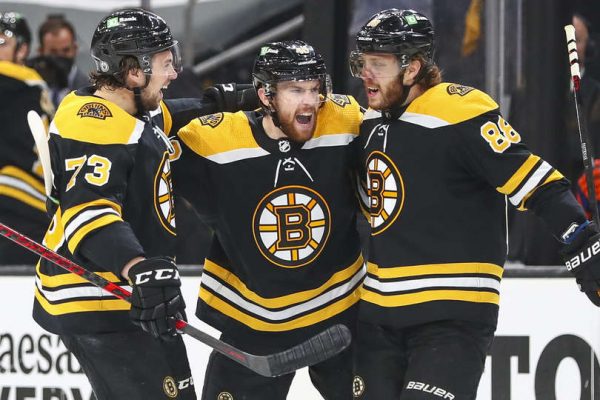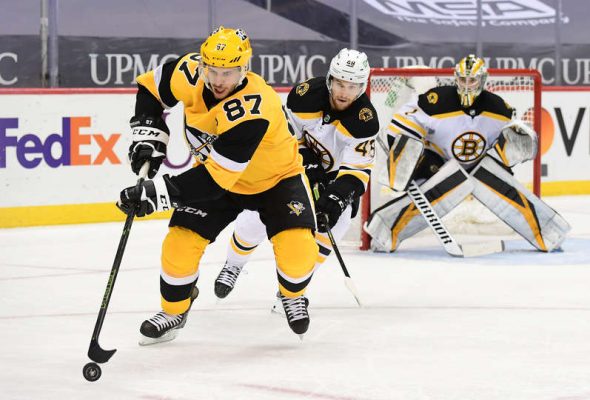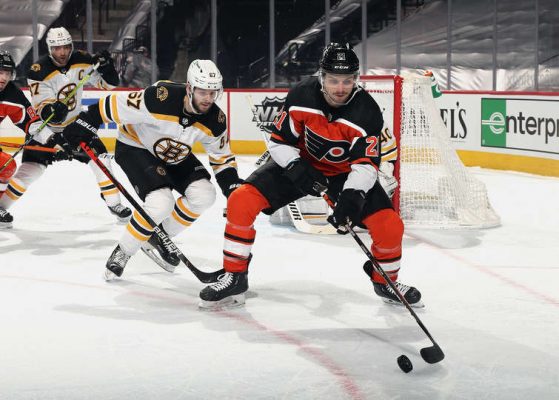
By: Connor Green | Follow Me On Twitter @connorgreen777
There are no questions about what just happened in the ’20-’21 season for the Bruins. Boston organizationally decided that moving on from Torey Krug and Zdeno Chara was a worthwhile gamble into seeing how the youth on the backend could produce and play impactful minutes.
To be fair, before we start picking away at what needs to be fixed, health was a big factor this season.
Lauzon – McAvoy
Gryzelcyk – Carlo
Zboril – Miller
Those were your pairings to start the season. Right, wrong, or indifferent. The youth movement this year brought a lot of skepticism and a lot of hope at the same time until the injuries exposed the flaws. In all fairness, the Bruins went into the season knowing there would be growing pains; we all knew it. So let us break it down pair by pair.
Lauzon – McAvoy
Expectations coming into this season were that Lauzon would slide up to play with McAvoy and take over the number one shutdown pair as Chara’s replacement. All the while allowing McAvoy to blossom while not having a slower defensive partner behind him. This pair didn’t last too long this season; however, they were OK while matched. The only drawback in hindsight was that McAvoy took his play much higher while pairing with Gryzelcyk later in the year. I don’t expect to see Lauzon returning to the top defensive pair next year; I believe the Bruins will move him down to a shutdown third pairing role. That being said, McAvoy is exactly as advertised and will continue to be the pillar of the blue line in Boston and a future Norris award winner.

Gryzelcyk – Carlo
This pair has been pretty consistent in recent memory for Bruins fans, and we expected a lot of the same. Until the Carlo injury and the eventual transition of Gryzelcyk to the top pair, we got exactly what we expected out of these two. Gryz has a flair for the offensive, getting pucks out of the defensive zone with apparent ease, finding seams in the offensive zone to set up teammates for good scoring chances, and of course, he can be relied on to hold his weight in the D zone.
Carlo brings exactly what he has brought to the team since the ’16-’17 season. A big, strong-bodied stay-at-home defenseman who can clean up in front of the net and be responsible with the puck in his own zone. Carlo did show us something this year that we hadn’t quite seen much of previously, jumping up in the rush. Carlo has a heavy shot when he uses it, and being the third man high on the rush quite a few times this year gave him the opportunity to show some of his offensive talents. I fully expect to see that again this coming season and expect Carlo to tally a few more points this season.

Zboril – Miller
Here comes the pairing that was the complete wild card this year. Zboril had only played two NHL games with the Bruins before this season. This was the time to shine for Zboril, and unfortunately, the 42 games he logged were underwhelming at most. Overall for Zboril, he wasn’t a disappointment; there is room for growth into a number three or four defensemen on the depth chart. Now for the hot button topic on the blue line, Kevan Miller, He was signed for more than Zdeno Chara in WSH, and everyone was ready to riot to begin the season.
While Miller missed A LOT of time due to injury this season, which made his retention very questionable, his impact on the ice was unquestionable. Miller made an obvious impact on how the Bruins as a team played defensively and helped to balance out defensive pairs. Exactly what you would hope out of a player making a million dollars on the season.
During the season, the Bruins picked up Jarred Tinordi off waivers from the Nashville Predators and then traded a third-round pick at the trade deadline for Mike Reilly. Tinordi was a Kevan Miller comparable plug-and-play defenseman, someone who could bang bodies, be relied upon in his own zone, and willing to do what is needed for his teammates. Tinordi is a UFA this offseason, and we can almost bet that he will not return to the Bruins. Reilly was one of the biggest wins for Don Sweeney at the trade deadline this year.
After being acquired and slotted in to play with Carlo on the second pairing, Reilly produced eight assists in 15 games with a +7 rating. Reilly showed flashes of greatness with moving the puck through seams and transitioning from defense to offense, which is what the Bruins were desperately missing after combining Gryz and McAvoy on the top pair. Expect Reilly to come back this upcoming season on a $2 million to #3 million AAV deal.
Moving forward with the defensive depth
Internal UFA/RFA’s
Who walks?
-Steven Kampfer
-Jarred Tinordi
-Kevan Miller
Who returns?
- Carlo – expect a three to four year deal around $3.5 million to $4 million AAV
- Reilly – expect a two to three year deal around $2 million to $3 million AAV
Expansion draft
There are only two real possibilities for Seattle to come swoop down and get a defenseman from the Bruins. Connor Clifton and Jeremy Lauzon. Both of those players will be exposed and fit the type of player you’d want to acquire as an asset. Outside of those two players, there is an interesting trade scenario to think of, could the Bruins attach a third-round pick to a prospect and John Moore to drop his $2.75 million off the salary cap next season?
It sounds like a very inexpensive way to clear cap for a crucial season coming up. Do you want to shed defensive depth with the injuries the Bruins just witnessed this last season? NO, but at the same time, you can not have a $2.75 million AAV player sitting on your roster and NOT playing. End of story there.
UFA and Trade Market
- Jamie Oleksiak
At 6’7″ 255-pounds, Oleksiak is one of the biggest defensemen in the league and uses that to his advantage. Coming off a contract with an AAV of $2.137 million, it’s fair to say he would command $3 million to $4 million AAV on his next contract. Oleksiak has been able to consistently put up 10-15 points per season pretty regularly while playing as a “shut-down” player. Think Brandon Carlo, but bigger! Oleksiak had a real coming-out party in the Edmonton bubble during the ’19-’20 Stars playoff run to the cup final. Playoff experience, big physical player, defensively savvy, What’s not to like about Oleksiak.
I envision him signing a three to four-year deal with an AAV of around $3.5 million. This contract is not out of the price range for Boston, but overall see this as a tier “B” option.
- Alec Martinez
Martinez is coming off another playoff run with the Vegas Golden Knights and completing his six-year $24 million contract. Martinez is a 6’1″ 209-pound 33-year-old and produces 25-30 points per season, and is very impactful in postseason play. This seems like the clear-cut number one option for what fills the Bruins needs this off-season but does it make sense? There are two ways to look at this scenario. First, Martinez is coming off a contract where he was underpaid at best; He will be looking to cash in on this UFA contract. I would expect him to sign a four to a five-year deal with an AAV of $5.5 million to $6 million. This may be too rich for the Bruins cap space depending on who they retain from their internal UFAs. If the Bruins can manage to retain Krejci, Hall, and Rask, then sign Martinez, they will be cup favorites.
- Vince Dunn
Vince Dunn is a pending RFA of the St Louis Blues, 6’0″ 203lbs; 24-years-old; produces 20-30 points per season and has a Stanley Cup ring on his resume. Dunn is Arbitration eligible, and his qualifying offer would be just shy of $2 million AAV. If the Bruins were acquiring him to sign long-term, I could see a contract around five to six years $3 million to $4 million AAV. Here is where this gets interesting, what is the return in a trade with the Blues for Dunn? Jake Debrusk is the first option that comes to mind, a young player with talent who could slot in well on their second line. Another trade I could see is Zach Senyshyn + 3rd round pick 2021 for Dunn. Senyshyn is an RFA this off-season; similarly to Dunn, Boston doesn’t have a roster spot to suit his talents, whereas St Louis does. All scenarios here are win-win for both parties involved.



Leave a Reply